Of all the talking parrots, the African grey parrot is one of the most amazing. Its intelligence is such that it not only talks but understands what it’s hearing and what it’s saying back. Unfortunately, this parrot is in such demand as a pet that it is endangered in the wild

The African grey parrot is native to western and central Africa, in countries such as Uganda, Gabon, Ghana, Ivory Coast, and Cameroon. It’s also found on the island of Principe. The bird is most often found in moist forests of the lowlands, though they can also be found as high up as 7,218 feet. Grey parrots are also seen in gardens, yards, savannas, mangrove forests, and forest clearings. They like to live close to the water and are happiest in trees found on islands in rivers.
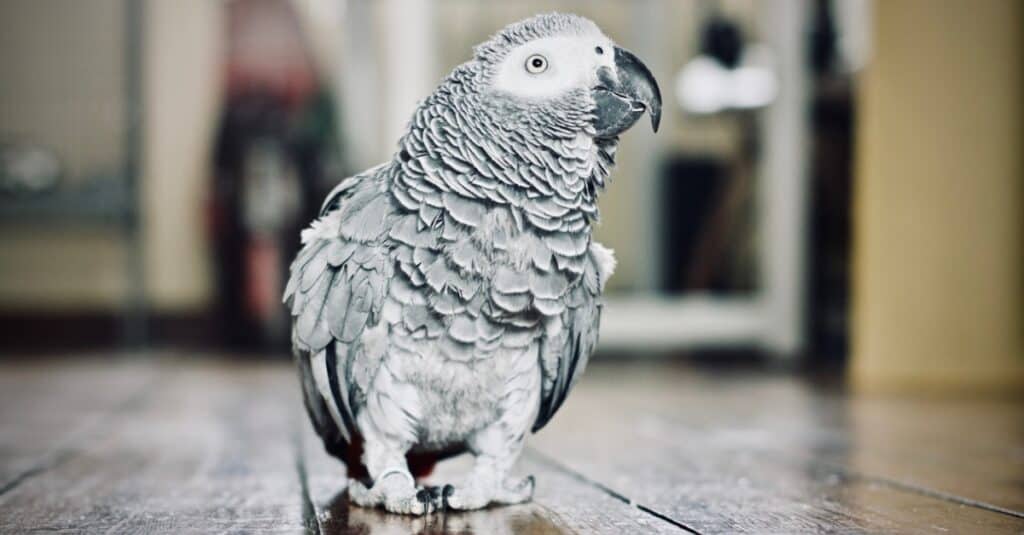
African grey parrots nest in tree cavities. Some of these cavities were once home to other birds, and if the hole is a bit too small, the parrot will use its powerful beak to enlarge it. Each parrot pair has its tree. Pet parrots use a nesting box that’s installed in a high area of their enclosure. This mimics, somewhat, the height of a tree.
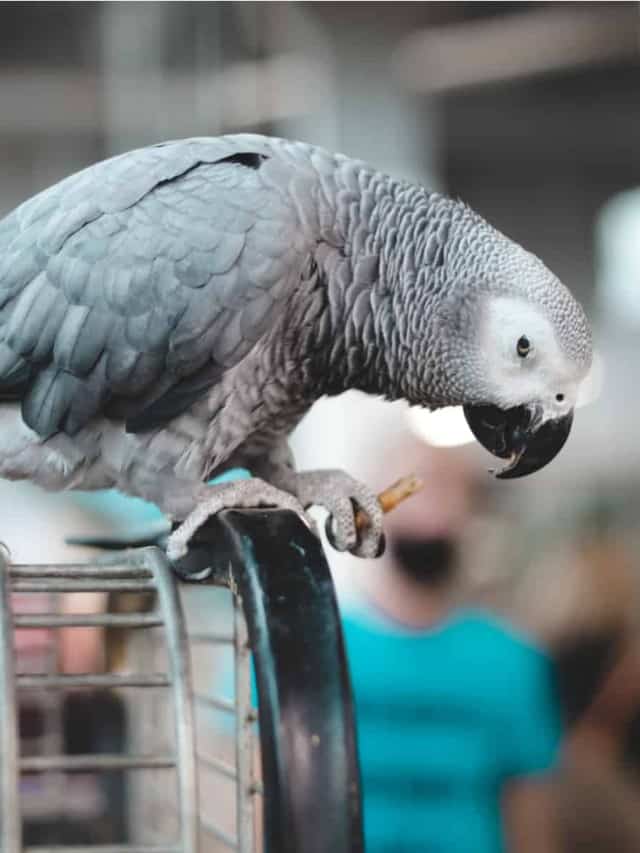
Paleontologists have discovered the fossilized bones of parrots that were dwelling in the moist forests of Europe twenty million years ago. This may seem quite recent in the timeline of birds, which is believed to have begun in the Mesozoic Era, somewhere between 250 and 65 million years ago. This era saw the evolution of birds from small dinosaurs that had feathers and beaks. The majority of the huge dinosaurs perished in a sudden shift of climate due to a massive asteroid collision with Earth and some volcanic eruptions around 65 million years ago. Only the small avian dinosaurs survived this mass extinction event.
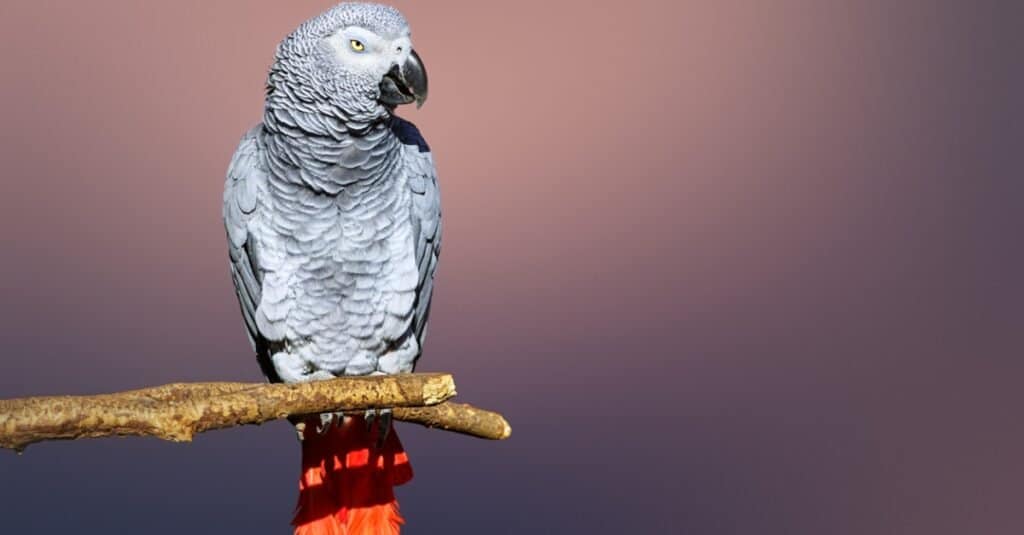
The appearance of the African grey parrot is unmistakable. It is medium-sized for a parrot, and the colors of its feathers are mostly shades of gray, though it has a startling red tail. Some of the feathers have a white edge that makes the bird’s plumage especially elegant. The colors of adults and juveniles are a bit different. Adult birds have yellow irises, while the irises of chicks are dark, and their tails are grayer. The parrot grows to around 13 inches long, has an 18 to 20.5-inch wingspan, and weighs between 14.75 and 18.5 ounces.
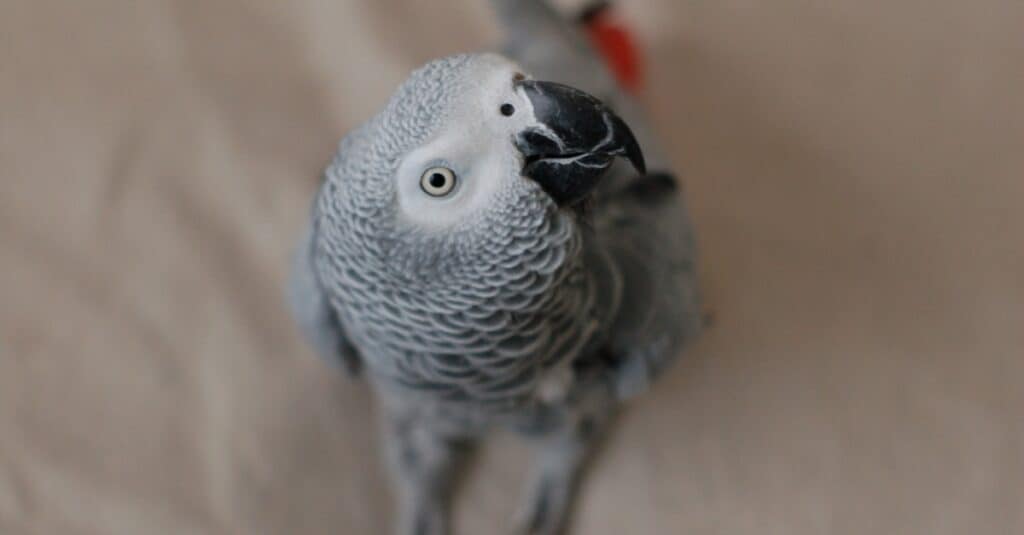
African grey parrots are very gregarious birds, which is why they are rather high-maintenance pets. Their intelligence demands mental stimulation, either from their owner or, ideally, another grey parrot or two. Though they are difficult to study in the wild, even wild birds are excellent mimics of other birds.
Though each parrot family has its tree to nest in, they congregate in huge flocks to roost in trees. Unlike other parrots, their flocks do not contain other species of parrots.
They are quiet during the night. Then at dawn, they use vocalizations to warn of danger, beg for food, and identify each other. It might sound like a lot of screaming to humans, but the vocalizations are complex and have to be learned by juveniles.
Because they need to learn a great deal about how to be a grey parrot, juveniles can stay with their families for years. During these years, grey parrots need to learn how to find food and water, how to defend their territory, and how to identify potential predators and avoid them. They also need to learn how to establish and defend their nesting sites and raise chicks. This leads to grey parrots becoming quite aggressive with each other when it comes to finding nest holes. On the other hand, grey parrots can be altruistic and share food with other grey parrots.
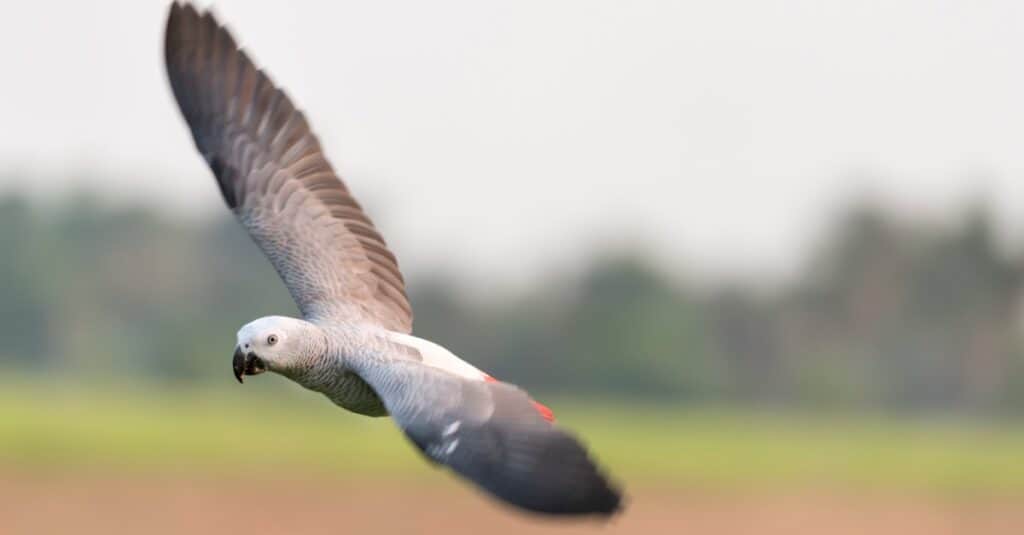
These parrots are herbivores and eat mostly fruit and nuts. They’ll also eat leaves and bark and will take snails and insects now and then. They’re partial to the fruit of the oil palm. African gray parrots mostly forage on the ground, and flocks of birds do this with care and foresight. First, they’ll gather in a tree, and they’ll descend to the ground in waves to find food. This keeps all the birds from being on the ground and thus subject to terrestrial predators at the same time. The parrots also ingest soil, which absorbs some of the toxins in their food.
If they do eat in a tree, the parrot climbs, not flies, from branch to branch.
Pet parrot maintenance includes a well-balanced diet made up of some seeds, nuts, fruits, and vegetables, including leafy greens. Parrots shouldn’t be fed avocados because they are toxic and must always have fresh water available. Ideally, pellets formulated for African gray parrots should be a major part of their diet.

This talking parrot finds safety in numbers in the wild, but it does have predators and threats. The worst of these predators is humans. Humans destroy the birds’ habitat, hunt them for traditional medicine and food and collect them for the pet trade, even though most birds die before they find a loving home.
One major natural predator of the parrot is the palm nut vulture, a small Old World vulture with striking black and white plumage. It is one of a few birds of prey that take grey parrots. Monkeys also steal parrot eggs and chicks, as do tree-climbing snakes. One way that parrots deter predators is to go silent when they see one, then all of a sudden erupt from the trees, screaming. This is sometimes enough to spook a predator.
Besides predators, parrots are subject to a variety of diseases, including blood parasites and tapeworms. Young parrots can succumb to a virus that causes psittacine beak and feather disease. In captivity, parrots can be stricken with infections and cancers. Obesity and malnutrition are also risks if the parrot doesn’t receive excellent care.

The female lays from three to five eggs in the tree cavity and incubates them while the male feeds her from the outside. The eggs, which are laid at two to five-day intervals, hatch after 30 days. Both parents take care of the babies, who are born blind and helpless. African grey parrot chicks take a long time to reach independence for a bird, even though they fledge when they’re about 12 weeks old. It can be three years before they have learned enough to be independent and another two years before they are reproductively mature. The lifespan of a wild parrot is about 23 years on average, while they can live 60 years or more in captivity.







